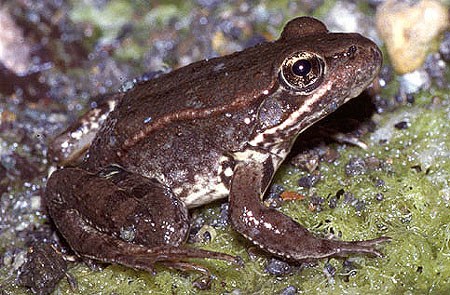Student Housing West is an enormous planned development on the West side of campus designed to house ~2600 undergraduates, 200-220 graduate students, nearly 140 apartments for student families and a childcare facility. Well, it was initially planned to be on the west side of campus, beginning below Kresge College and continuing down the hill to the current site of Family Student Housing. That was the site university administrators provided for developers pitching their concepts for the project in an extended series of meetings last summer. We selected one developer, Capstone Development Partners, because of their proven track record of student housing construction and management. I personally voted for them because their plan had the highest goals for sustainability and the team made it clear that they would work to adapt to any contingencies which would surely arise during the future planning process.

It turned out that their promised adaptability was put to the test when we were informed that nearly half the site would not be usable for construction. It turns out that a very cute and endangered species, the Red-Legged Frog, uses that corridor for their annual migration from the northerly forests to the grasslands near the Arboretum. Capstone suddenly had to work with half the space that they had initially anticipated for the 2800 students destined to live at West Campus. In addition, it meant there would be no housing prepared for current families living in Family Student Housing (FSH) when it was torn down to make room for the new development.

This news could well have killed the project. SHW would not be built in time. Students would be left to fend for themselves and find housing in town on Craigslist. But members of the planning committee discussed another site for the new FSH, one which I have long personally considered a waste of space: the “meadow” near Hagar and Coolidge Drive. As an environmentalist and earth scientist, I bristle at the suggestion that the field at the base of campus is some kind of natural grassland. This space is heavily damaged; if it was left alone, it would return in a few decades to being redwood forest much like North Campus. But it hasn’t been left alone. It is instead a haven for domestic cows which graze and trample the space year-round. The animals, while endearing, continuously roam mowing every blade of grass to a stub, happily emitting methane on a prime piece of real estate.

Perhaps the current ongoing environmental review of the site will find that the land is needed by some sensitive species other than domestic cattle. If that turns out to be the case, then I will shut up and the project will probably need to restart at the drawing board. But some of the “alternative sites” that East Meadow Action assures us are available on campus (but never get specific about) seem far worse to me. Some possibilities include the forested land north of campus or the trailer park on the Northwest of campus. Both of these places seem much worse candidates to pave over to me in terms of ecological value (redwood and oak woodland) or their need for people (the trailer park is some of the most affordable housing on campus and much beloved by the students living there). I would much rather pave over cow pasture than a forest or someone’s home.
When I read through the website of East Meadow Action, I am struck that the centerpiece of their argument is the aesthetic value of lower campus as open space. I confess that I find this extremely irritating. It’s irritating to me because aside from being an advocate for conservation of sensitive species like the red-legged frog, I am also a student who has to get by living in this town, and I don’t have the luxury of worrying about aesthetics. When they mentioned Ranch View Terrace as an example of “building done responsibly”, my opinion was sealed. Take one look at the floor plans described for the single family homes of Ranch View Terrace, “a large housing complex set back from the road and mitigated by vegetation and topography.” How exactly are we going to house 2500 students in single family homes, artfully hidden behind trees? East Meadow Action is not motivated by environmentalism. They’re motivated by the same Not In My BackYard mentality that is choking the development of dense housing in town. We are in a housing crisis and their ocean views are a luxury that we can’t afford.

I agreed to be SHW rep because I want to make sure future graduate students will have an affordable housing option on campus. I currently am “lucky” to spend 40% of my stipend on rent in town. When I first came to attend grad school here I had to deal with Craigslist and ended up paying over 60% of my income for the first two years I lived here. Students are pursuing extreme solutions. I know people considering living in the woods, or in unzoned bedrooms in town that are another source of tension with the community. It will only continue to get worse as rents rise in the coming years.
Right now, all we can do to remedy the issue in Santa Cruz is pass rent control ordinances and increase supply. SHW is the best project we have to increase supply and do so ensuring maximum density. I want UCSC to continue to be a forest campus, which necessitates not chopping down trees. I am trying to ensure that students have an affordable housing option on campus. I want student families to have guaranteed housing that comes online right when their previous outdated complex is torn down. The sentimental affection that some may feel for the aesthetics of a cow pasture strikes me as the privilege of a comfortable and vocal minority. I value the croaking of frogs and the laughter of children over the yammering of NIMBYs and, yes, even the mooing of cows.
Dan Killam
Fourth Year PhD Candidate, UCSC Earth and Planetary Sciences
University of Southern California ’12, BS Environmental Studies
Graduate Representative for Student Housing West
